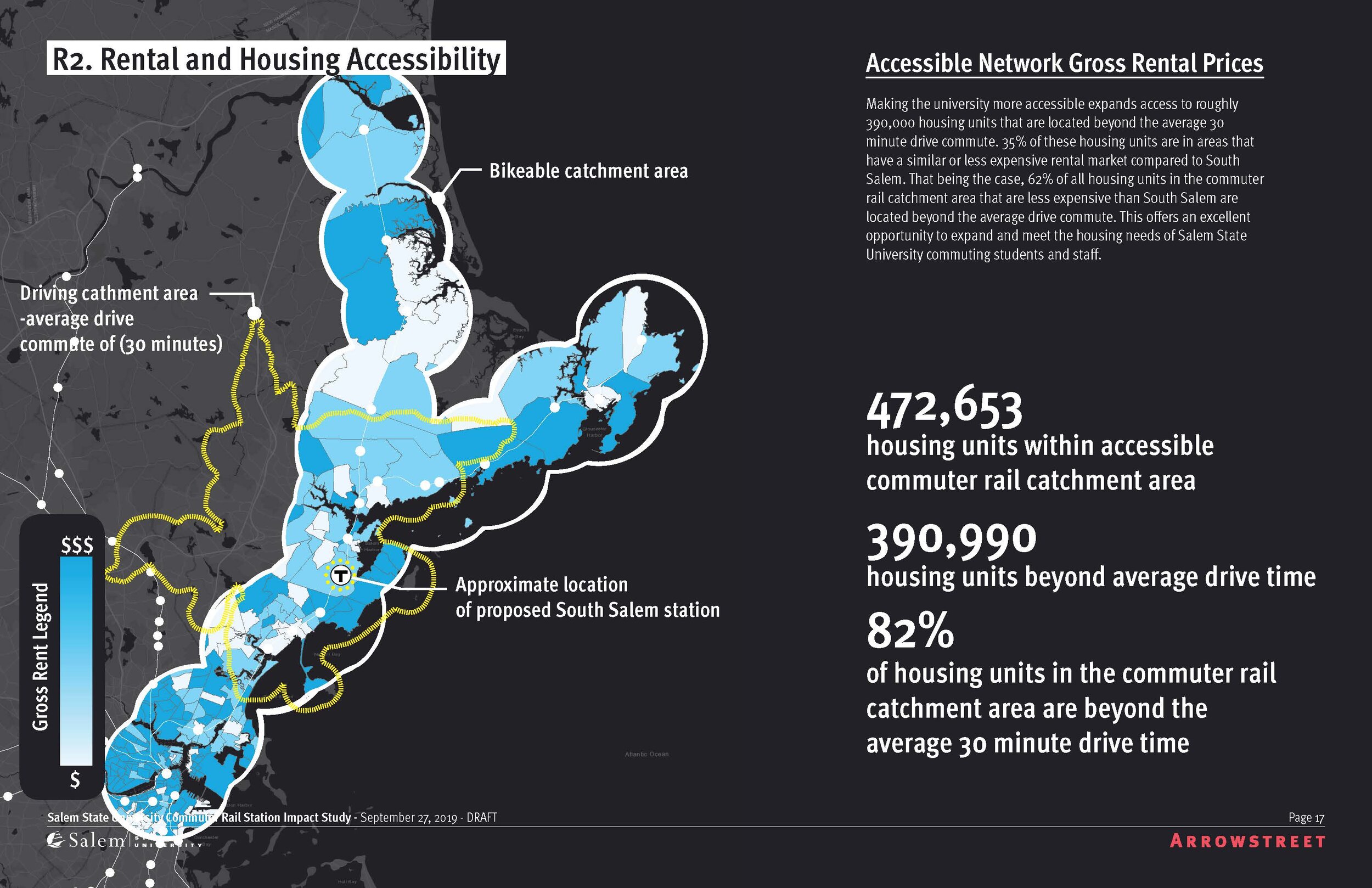Commuter Rail Impact Study - Salem State University
Note: This work was completed under contract with Arrowstreet. All images and content courtesy of Arrowstreet.
Project Lead: Arrowstreet
Client: Salem State University
Date Completed: October 2019
Tyler’s Role: Project Manager and Lead Researcher
Context
As a whole, national post-secondary student enrollment has been decreasing at a rate between 1% and 2% annually since the Fall semester of 2015. And while public 2-year and 4-year institutions have fared slightly better than private institutions, they are still seeing declining enrollments.
Massachusetts institutions aren’t immune–seeing a decline in enrollment by as much as 3.9% since Spring 2016. Along with this shift in post-secondary enrollment comes an evolving approach to education. Technology has improved and changed the way students and instructors access the classroom and educational resources. This also means that students and other stakeholders are engaging with their post-secondary institutions in new and evolving ways.
Despite the national trend of declining enrollments, Salem State University has set a bold vision to be a premier teaching institution and to “provide a high quality, student-centered education that prepares a diverse community of learners to contribute responsibly and creatively to a global society, and serve as a resource to advance the region’s cultural, social and economic development.” To achieve this goal, the University is exploring ways for increasing access to the campus and the region’s resources for students and faculty that not only provide its existing student body new ways of learning and growing, but to help attract more prospective students to enroll with the University.
In parallel, the University has identified other opportunities for engaging with the global economy by providing access to the university resources for non-student organizations i.e. corporate meeting/retreat space, summer camps, etc.
The Salem State University leadership is considering the investment of financial capital to bring a new Massachusetts Bay Transit Authority (MBTA) Commuter Rail Station to a location adjacent to campus. The goals in building a new station adjacent to campus are to increase access to the university for all students, especially those that don’t have access to a private vehicle, attract new students, reduce dependence on private vehicles in an effort to be more sustainable, and ultimately position the university as a leading post-secondary public institution in Massachusetts.
As it is today, the university is located between two commuter rail stations, Swampscott to the south and Downtown Salem to the north. The proximity of the university to these two stations is not convenient for students and faculty. The university has attempted to improve access to the Downtown Salem station by offering university shuttles to students and faculty. But this program was ultimately discontinued due to lack of ridership.
Before investing in the new station, it is important to have an understanding of the expected impact that the station might have on topics like student life, university positioning and marketing, and student enrollment. As such, this study has identified focused areas of research to guide the direction of the report. Based on these areas of research and their findings, this study has provided a high level summary of insights in the following pages.
Main Recommendations to the University
Based on the findings outlined in this report, we think that the proposed South Salem commuter rail station is likely to draw more ridership and interest from current and prospective students and staff. But in order for the station to be truly successful, special attention will need to be given to various factors.
First, we recommend that the university continue to support the expansion and connection of the Salem bike path and work with the MBTA to install Zagster bike sharing docks at the new station.
Second, We also suggest that special attention be given to the economic development and planning of the portion of Canal Street adjacent to the station. This will be crucial in making the station seem friendly and usable as a destination, especially when compared to the existing context of industrial lots that border the site.
Finally, in order to tap into the expanded network of prospective students that live beyond the average drive commute, the University needs to invest in marketing the school’s brand as being synonymous with public transit access. And it will be important for this brand to be communicated to students early on in their search for post-secondary education, before they make their commuting decisions.























